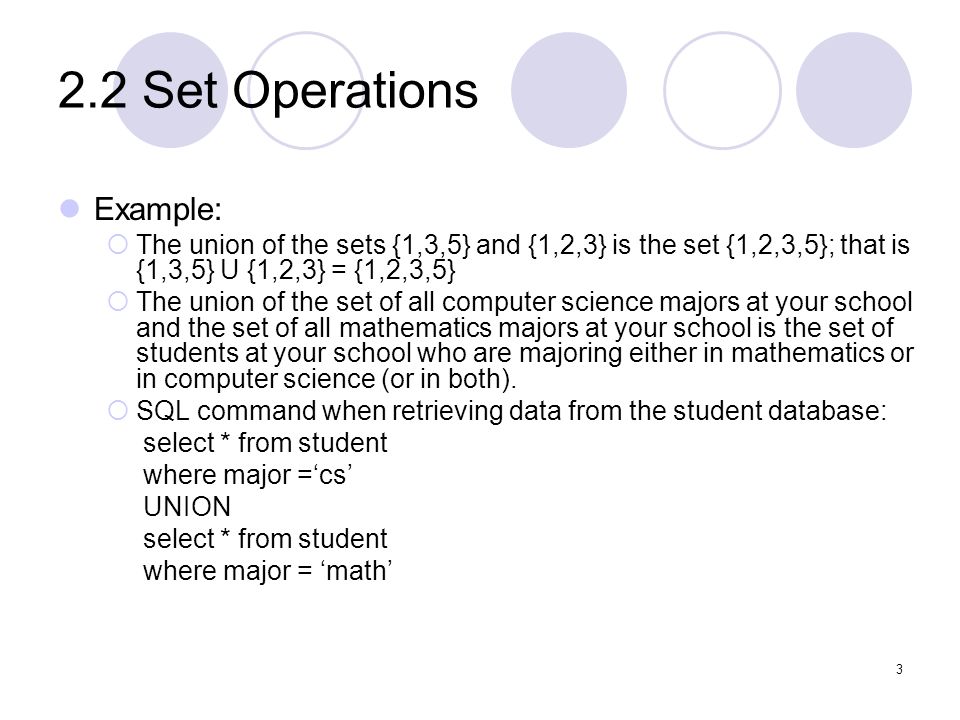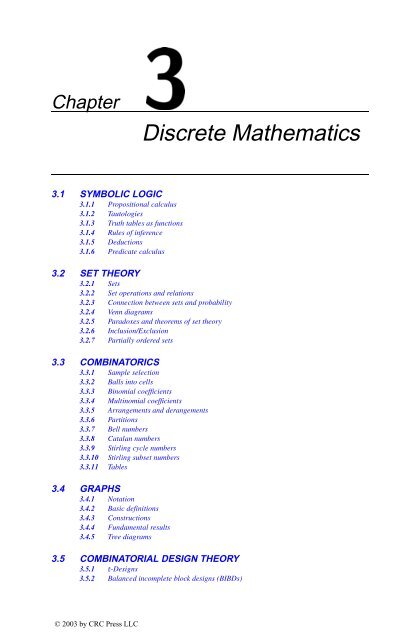
Richard Mayr (University of Edinburgh, UK) Discrete Mathematics. Variables stand for (and can be replaced by) elements from their domain. Can contain variables and predicates, e.g., P(x). Propositional functions are a generalization of propositions. Predicates (i.e., propositional functions): P(x), Q(x), R(y), M(x, y). Chapter / 23Ĥ Predicate Logic Extend propositional logic by the following new features. We need a language to talk about objects, their properties and their relations. Does it follow that Socrates is mortal? This cannot be expressed in propositional logic. Chapter / 23ģ Propositional Logic is not enough Suppose we have: All men are mortal. Chapter / 23Ģ Outline 1 Predicates 2 Quantifiers 3 Equivalences 4 Nested Quantifiers Richard Mayr (University of Edinburgh, UK) Discrete Mathematics. For students or professionals looking diiscrete a quick but thorough guide this is a perfect fit.1 Discrete Mathematics, Chapter : Predicate Logic Richard Mayr University of Edinburgh, UK Richard Mayr (University of Edinburgh, UK) Discrete Mathematics. At the end of each chapter there's a 1-2 page summary very helpful and a section on an application of the Maths onto computer science.
DISCRETE MATHEMATICS ENSLEY CHAPTER 2 PDF
Chapters are short and digestible, pdf are useful and progressive. User Review - Excellent book, clearly written and quite comprehensive. This book is designed for computer scientists with modest haggarty of mathematics who are looking to understand the more mathematical side of computing and programming concepts. Emphasis is placed on clear and careful rod of basic ideas and on building confidence in developing mathematical competence through carefully computing exercises. The topics are presented in a well defined, logical order that build upon each other and are constantly reinforced by worked examples. The content constitutes an accepted core of mathematics for computer scientists for example, the formal methods used in computer science draw heavily on the discrete mathematical concepts covered here, particularly logic, sets, relations and functions. Reliance on previous mathematical experience is kept to a minimum, though some basic algebraic manipulation is required.

DISCRETE MATHEMATICS ENSLEY CHAPTER 2 HOW TO
The author presents discrete worked examples and practice exercises with full solutions so readers see how to work with the mathematical concepts covered, thereby developing their own competence. The author presents numerous worked examples and practice exercises with full solutions so readers see how to for with. Too often, computing students first experiences of university mathematics will be of abstract theoretical concepts that appear irrelevant to their chosen course of study. Discrete Mathematics for Computer Science provides a lucidly written introduction to discrete mathematics with abundant support for learning, including over 450 examples, thorough chapter summaries, simple quizzes, and approximately 1600 homework exercises of widely varying difficulty.ĭiscrete Mathematics for Computing - This book is a short, concise introduction to key mathematical ideas for computing students which develops their understanding of discrete mathematics and its application in computing. Rod Haggarty is the author of Discrete Mathematics for Computing 3. Emphasis is placed on clear and careful explanations of basic ideas and on building confidence in developing mathematical competence through carefully selected exercises.


The content constitutes an accepted core of mathematics for computer scientists for example, the formal methods used in computer science draw heavily on the discrete methematical concepts covered here, particularly logic, sets, relations and functions. The book also contains carefully selected exercises for which full worked solutions are provided. ※ Download: Discrete mathematics for computing rod haggarty pdf


 0 kommentar(er)
0 kommentar(er)
